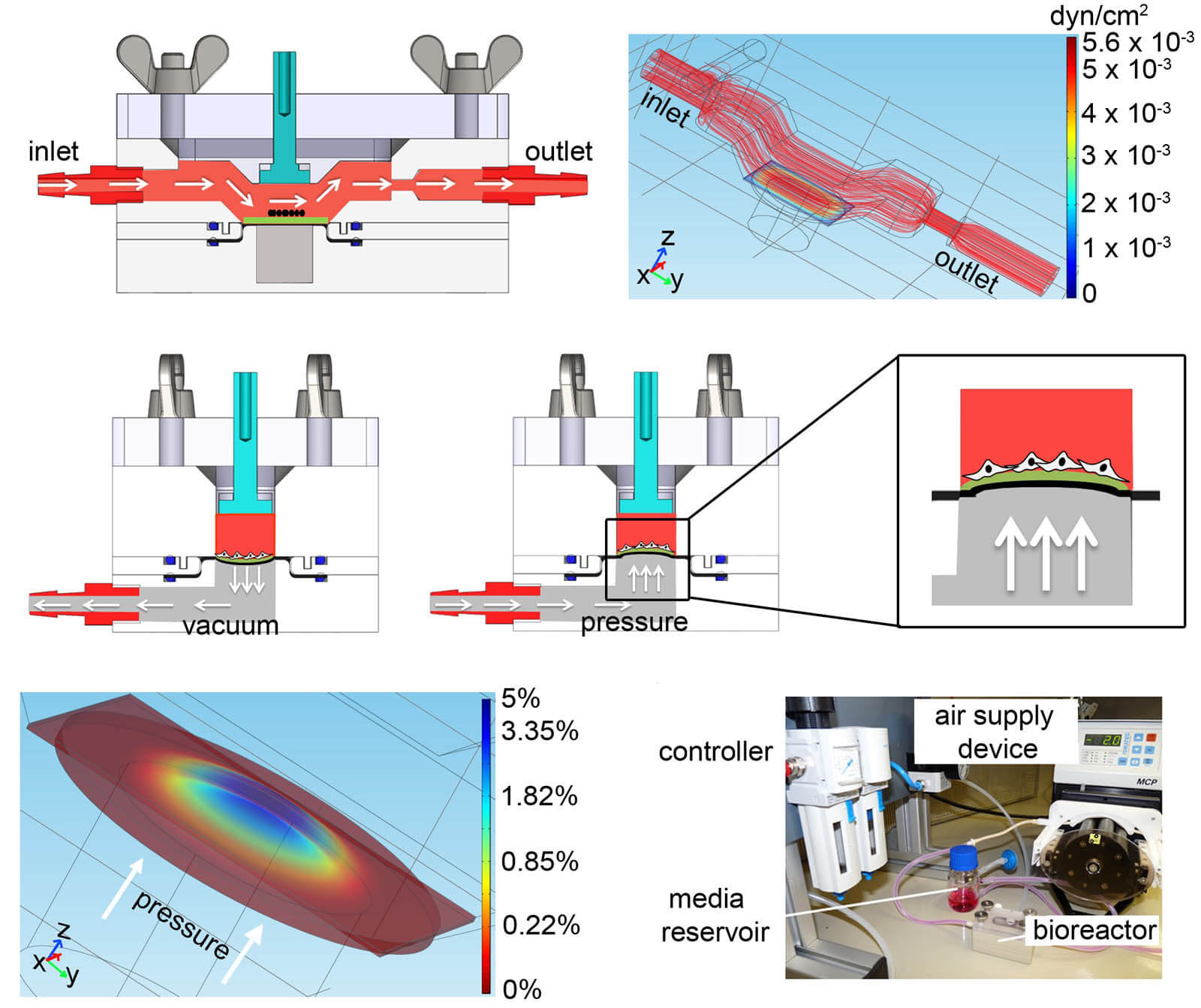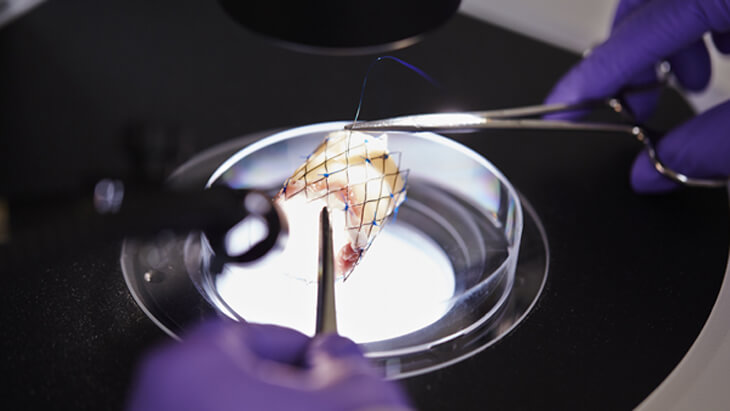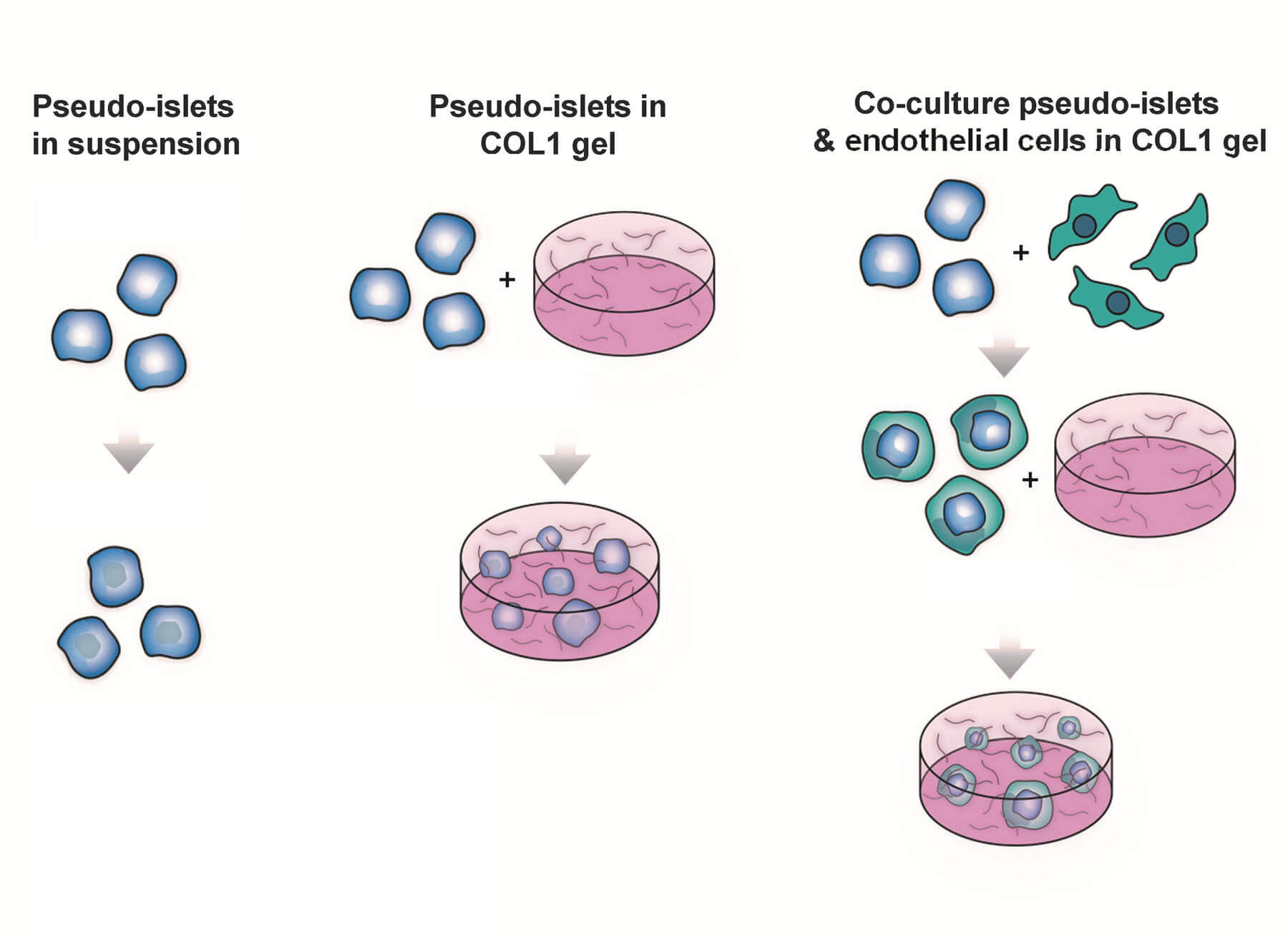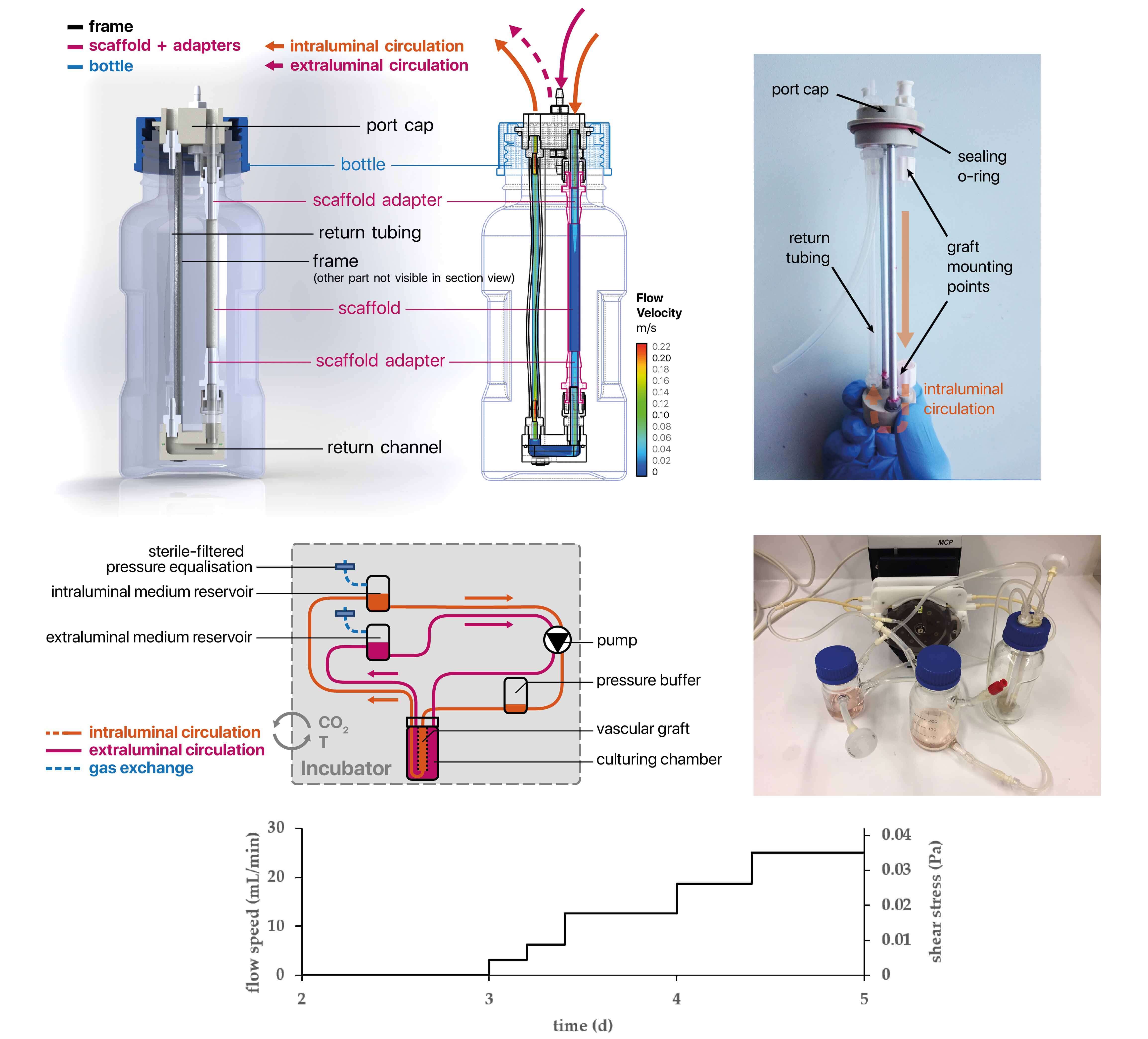Bioreactors are used to create biomechanical stress. In this project, we developed a bioreactor system to employ pulsatile flow (1.48 mL/min), cyclic strain (5%), and extended culture time to improve the maturation of murine and human ESC-CMs. Dynamically-cultured ESC-CMs showed an increased expression of cardiac-associated proteins and genes, cardiac ion channel genes, as well as increased SERCA activity and a Raman fingerprint with the presence of maturation-associated peaks similar to primary CMs. We presented a bioreactor platform that can serve as a foundation for the development of human-based cardiac in vitro models to verify drug candidates, and facilitates the study of cardiovascular development and disease.

Bioreactors

Heart Valves
Currently available heart valve replacements are limited in long-term performance or fail due to leaflet thickening, lack of growth or remodeling potential. In order to address these issues, it is necessary to mimic multiple factors of the native valvular extracellular matrix (ECM) such as architecture, mechanical behavior and biochemical signals. In this work, we successfully generated an electrospun PEGdma–PLA scaffold adapted to the structure and mechanical properties of native valve leaflets. Valvular interstitial cells (VICs) and valvular endothelial cells (VECs) were seeded on the scaffold and when cultured under physiological conditions in a bioreactor, the construct performed like a native leaflet. Atomic force microscopy (AFM) was employed to obtain detailed mechanical information from the leaflets, which enabled the first layer-specific measurement of the Young's modulus. Interestingly, spongiosa stiffness was much lower compared to the fibrosa and ventricularis. Moreover, investigations into human fetal heart valve development identified collagen type I and versican as important structural proteins. As a proof of principle, these proteins were introduced to the scaffold, demonstrating the ability to bio-functionalize the hybrid valve based on natures' blueprint.

Engineering Islets
In this study, we investigated the expression of three relevant groups of pancreatic ECM proteins in human native tissue, including basement membrane (BM) proteins (collagen type 4 [COL4], laminins [LAM]), proteoglycans (decorin [DCN], nidogen-1 [NID1]), and fibril-forming proteins (fibronectin [FN], collagen type 1 [COL1]). In an in vitro hypoxia model, we identified that ECM proteins were differently affected by hypoxic conditions, contributing to an overall loss of β-cell functionality. The use of a COL1 hydrogel as carrier material demonstrated a protective effect on β-cells mitigating the effect of hypoxia on proteoglycans as well as fibril-forming protein expression, supporting β-cell functionality in hypoxia. We further showed that providing endothelial cells (ECs) into the COL1 hydrogel improves β-cell response as well as the expression of relevant BM proteins. Our data show that β-cells benefit from a microenvironment composed of structure-providing COL1 with the incorporation of ECs to withstand the harsh conditions of hypoxia. Such hydrogels support β-cell survival and can serve as an initial source of ECM proteins to allow cell engraftment while preserving cell functionality posttransplantation.

Blood Vessels
Appropriate mechanical properties and fast endothelialization of synthetic grafts are key to ensure long-term functionality of implants. In this study, we used a newly developed biostable polyurethane elastomer (TPCU) to engineer electrospun vascular scaffolds with promising mechanical properties (E-modulus: 4.8 ± 0.6 MPa, burst pressure: 3326 ± 78 mmHg), which were biofunctionalized with fibronectin (FN) and decorin (DCN). Neither uncoated nor biofunctionalized TPCU scaffolds induced major adverse immune responses except for minor signs of polymorph nuclear cell activation. The in vivo endothelial progenitor cell homing potential of the biofunctionalized scaffolds was simulated in vitro by attracting endothelial colony-forming cells (ECFCs). Although DCN coating did attract ECFCs in combination with FN (FN + DCN), DCN-coated TPCU scaffolds showed a cell-repellent effect in the absence of FN. In a tissue-engineering approach, the electrospun and biofunctionalized tubular grafts were cultured with primary-isolated vascular endothelial cells in a custom-made bioreactor under dynamic conditions with the aim to engineer an advanced therapy medicinal product. Both FN and FN + DCN functionalization supported the formation of a confluent and functional endothelial layer.